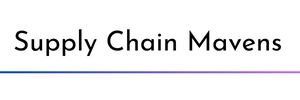—the kind a CEO appreciates
iStock photo
The Conference Board’s CEO global outlook study for 2024 includes the following top high focus, internal issues:
Attract and retain talent,
Accelerate pace of digital transformation,
Enhance product and service innovation,
Improve customer experience,
Reduce costs,
Upskill and reskill talent
Luckily, supply chains integrate each element listed above.
But only if the strategic plan calls for end-to-end integration.
Unfortunately, in many companies, many of the items will be “fixed” in a silo’d manner. Meaning solutions in one area will not work well, if at all, with solutions in another area.
How many companies may be stifling innovation by using silos?
Thirty-three percent of respondents in The Conference Board’s survey that stated they were not changing their supply chains. Regrettably, this often means silo’d solution development stays in vogue at the company since silos are common.
By not changing supply chain setup for improved performance in today’s environments, the risk of obsolescence and then of not being attractive to talent is very real. The risk of losing competitive value is also very real.
But let’s say your leadership is interested in understanding how an integrated solution set should look for the above issues.
If we start with a focus on supply chain sustainability (yes, including the ESG part, as well as the viability part where the supply chain survives variability as well as minor and mid-level shocks.), you might present something like:
costs will be reduced due to improved operations which reduce the company’s Scope 1 carbon footprint,
costs will be reduced due to improving the product in ways that:
reduces Scope 3 carbon footprint during customer use,
improves the customer experience while reducing strategic risk due to product redesign removing hazardous materials (in favor of more ecofriendly/human friendly materials) and creating a list of specification meeting, approved material substitutions in case of critical material shortages from suppliers.
extends product life while at the same time reducing costs of travel/product replacement/field service by expanding the use of automated digital product updates and upgrades. Both Scope 1 and Scope 3 carbon reductions will also be realized.
cost reductions, improved customer experience, improved lead time knowledge due to end-to-end supply chain visibility enabled through tier 2 partners and suppliers. Products will be reviewed for the potential to embed track and trace capabilities in the product designs to lessen dependence on later attached sensors.
attracting talent due to our innovations in sustainable practices and products. By protecting the planet you attract, and retain, talent that is looking for corporate purpose.
reskilling personnel with targeted supply chain training to improve adoption and success rates of changes introduced. Lack of continued training, lack of knowledge of company career paths are major issues in retaining talent.
As you innovate, integration of issues is required so solution sets are not constantly reworked every time a new issue comes up which needs flexibility not thought about before.
A great way to frustrate your workforce and keep them looking for other opportunities is to not adjust how you do business – especially when expectations of performance have changed.
Keeping your supply chains the same means success metrics may not be adjusted to accommodate what is desired. Old metrics may not capture improvement, or failure, leaving you in the dark on what is really happening.
The report by The Conference Board shows high leadership interest in accelerating the pace of digital transformation, including AI, while also citing much lower leadership focus on AI governance policy.
But policy is made from corporate strategy.
Policy is governance. Policy helps set needed metrics.
And governance is a starting point for tying together your digital strategies (hopefully you have them – especially for AI) and integrating solutions by not separating everything into small pieces to be solved independently without coordination across functional areas.
But hey, as long as it works, at least you have solutions. Right?
What really happens?
Employees become frustrated. Or become more frustrated. Supply chain performance is negatively affected. Systems don’t talk to each other. With AI, those systems may even try to compete against each other. The company loses revenue making capacity – maybe capability – as in, it may lose revenue.
How should you prevent these solvable, catastrophic effects from happening? The list needs solutions. Solutions that will help gain competitive advantage, not hurt it.
Use a supply chain governance framework that assists leadership with strategy, policy setting, and communication.
SCOR is such a framework.
A good framework allows you to determine which combination of elements released at what time will provide the measurable results you seek with the capabilities you have at that time.
Strategic, tactical, and operational optimization is available using SCOR’s tiered framework. It defines and connects the high and low impact issues you as a leader deal with and want innovated and resolved.
To learn more about the SCOR framework before identified issues become even bigger, outsized problems, click here.
Thank you for reading our blogs.
Cynthia Kalina-Kaminsky is an ASCM Master SCOR instructor and consultant. She’s also a supply chain professional and will be teaching the upcoming SCOR-Framework workshop.
Supply Chain Mavens is teaming up with Process and Strategy Solutions to offer SCOR classes.
Learn more about the courses and register on the Process and Strategy Solutions website.

